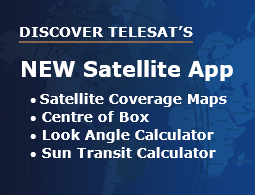Space is experiencing fundamental change. Northern Sky Research articulated a list of market trends affecting the space industry. One trend was satellite operators’ verticalization, as they sought to control more value chain elements, such as manufacturing, ground terminals, and service provision.
Historically, space providers provided communication solutions to customers through service providers and value-added resellers (VARs). Today, examples of verticalization abound. Starlink, from the start, controlled every step in the value chain.
Intelsat bought Gogo to sell directly to IFC customers. SES Government Solutions purchased DRS Global Enterprise Solutions to increase its ability to sell end-to-end capabilities and to work directly with government buyers. Viasat purchased RigNet to sell directly to oil and gas companies.
All these companies see advantages for themselves in verticalization. But is it best for the end customer?
Telesat is not following the recent trend of verticalization. We are staying consistent with the approach that has delivered success for our company and our customers for 55 years. Telesat’s approach is to work through existing service providers and equipment manufacturers. These companies know what their customers want, and one of those things is choice. We work openly, responsively, and collaboratively with all these customers to shape their offerings, expand addressable markets, and facilitate end-user growth.
We can look to the IFC market for examples of this kind of approach. ThinKom Solutions is a leading designer and manufacturer of high-performance satcom antennas and works closely with Telesat. Recently, the two companies announced an expanded development partnership to certify ThinKom’s ThinAir Ka2517 antenna for the Telesat Lightspeed Low Earth Orbit (LEO) satellite network.
The Ka2517, utilizing ThinKom’s patented VICTS (Variable Inclination Continuous Transverse Stub) technology, is DO-160-approved and currently a terminal of choice for the Airbut HBCplus Ka-band linefit with Airbus. Additionally, ThinKom is pursuing direct linefit with Boeing aircraft. Channel Partners who leverage the Ka2517 in their solutions will have a field-proven, straightforward upgrade path for airlines to provide Telesat Lightspeed IFC services.
Telesat’s enterprise-grade “wholesale” approach to space connectivity ensures that the best-managed services are designed around the specific business challenges of end users. Telesat’s Virtual Network Operator (VNO) approach means that the IFC provider can tailor the service to the specific needs of the airline, aircraft, or flight route. This means different channels might offer different solutions based on Telesat Lightspeed to the same airline.
It also guarantees that the customer is getting an unbiased recommendation. For example, consider an airline researching whether a multi-orbit approach makes sense. It all depends on what they are trying to accomplish. Aircrafts already equipped with an antenna compatible with Telesat Lightspeed can take advantage of the addition of Telesat Lightspeed to the GEO network they currently use right from the start of service of our LEO network.
However, providing lower latency for broadband applications will be very important for passengers. Telesat Lightspeed will deliver a quality of experience comparable to what can be delivered over terrestrial networks, such as fiber, wireless, etc. And the benefits don’t end there.
Our network is uniquely positioned to provide a very consistent gate-to-gate superior user experience. It provides global coverage that covers any route, the concentration of capacity to serve hundreds of aircraft around airports, built-in resiliency, and throughput to the aircraft up to a Gbps that supports the “free-to-passenger” WiFi model.
LEO technology has dramatically changed the space market, but like GEO, one size does not fit all. Working through partners and letting the customer decide has always been successful, and we are sticking with that approach for Telesat Lightspeed.




